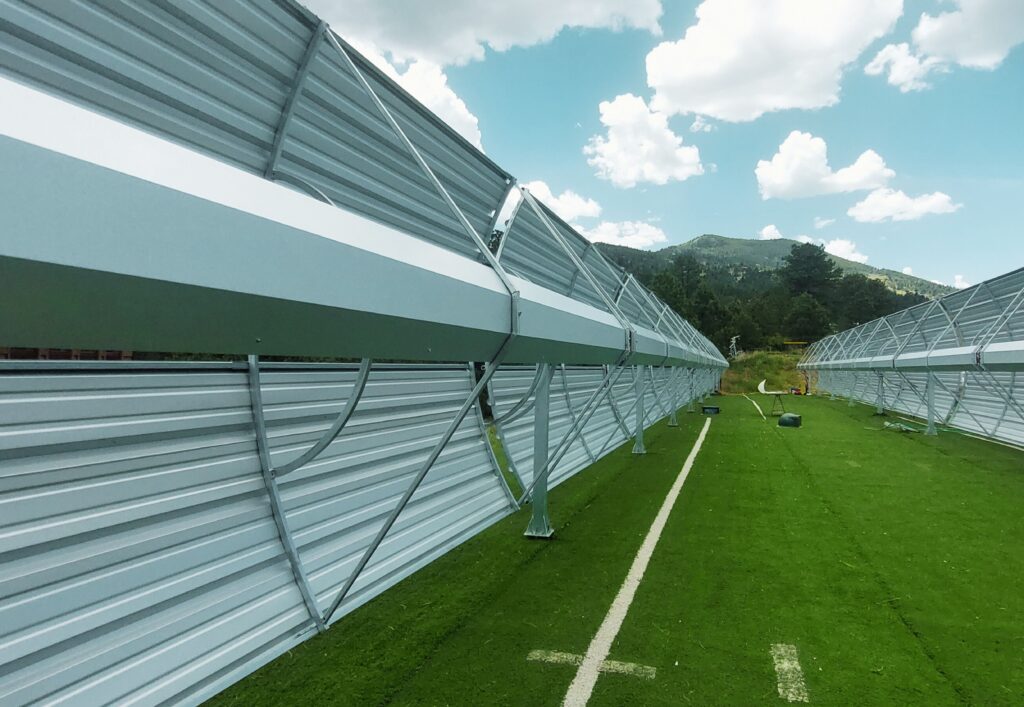
Understanding Thermal Desalination: Process, Benefits, and Solar-Powered Innovations
Through the remarkable process of thermal desalination, we can be one step closer to a future where communities, farms, and industries alike can enjoy a steady flow of clean, fresh water.
With about 70% of the Earth’s surface covered by water, it might seem like there’s an abundance, but only 3% of this is freshwater, most of which is locked in ice or buried underground. The remainder is saltwater, which is not suitable for human consumption, agriculture, or most industrial uses.
Thermal desalination offers a solution to this crisis by transforming seawater into freshwater. This blog will explore what thermal desalination is, how the process works, its benefits, and how solar-powered innovations are shaping its future.
What is Thermal Desalination?
Thermal desalination is a process that utilizes heat energy to separate the salts and minerals from saline water, such as seawater or brackish water, to produce freshwater.
It’s one of the oldest and most reliable desalination methods used globally, but recent advancements have made it a more viable and efficient option for water purification.
How does Thermal Desalination work?
At its core, the desalination thermal process mimics the natural water cycle: seawater is heated until it evaporates, leaving behind salts and impurities. The vapor is then condensed back into water, but this time as freshwater, free of salts and other contaminants.
There are several methods of this technology but the most common ones include:
Multi-Stage Flash (MSF) Distillation
This is the most widely used thermal desalination method. In MSF, seawater is heated and then rapidly depressurized, causing it to flash into steam. This steam is collected and condensed into freshwater. The process occurs in multiple stages, allowing for higher efficiency and larger production volumes.
Mechanical Vapor Compression (MVC)
In this process, water is evaporated, and the resulting vapor is compressed, increasing its temperature and pressure. The compressed vapor is then used to heat the incoming saline water, creating a continuous cycle of evaporation and condensation.
Multiple Effect Distillation (MED)
MED is another technique that uses multiple vessels (or “effects”) operating at progressively lower pressures. In each stage, seawater is heated, and the vapor generated is used to heat the next stage, reducing energy consumption. MED is known for its efficiency, especially in smaller applications.
Vapor Compression Distillation (VCD)
VCD is typically used for smaller-scale thermal desalination plants. In this process, the vapor generated by the evaporation of seawater is compressed, increasing its temperature. This compressed vapor is then used to heat more seawater, making the process more energy-efficient than standard distillation.
Each of these methods has specific applications and benefits, but they all rely on the same thermal desalination definition and fundamental principle: using heat to separate salt and impurities from water.

Applications and Advantages of Thermal Desalination
Thermal desalination is particularly well-suited for regions with high energy resources but limited access to freshwater. It’s a common solution in coastal desert regions and arid countries where freshwater demand is high and the cost of importing water is prohibitive.
Key Applications:
- Middle Eastern countries: Countries such as Saudi Arabia, the UAE, and Kuwait use thermal desalination to provide potable water to their populations. These regions have abundant seawater but limited freshwater sources.
- Industrial uses: This technology is also used in industries that require large quantities of purified water, such as power plants and oil refineries.
- Large-scale urban supply: Thermal desalination plants are capable of producing vast amounts of water, making them suitable for supplying large cities with clean drinking water.
Key Benefits:
- Efficiency in treating high-salinity water:It is particularly effective at treating high-salinity water, making it ideal for locations where the salt content of seawater is especially high.
- Scalability: It is suitable for large-scale operations, making it an efficient solution for regions with a high demand for freshwater.
- Durability: The desalination process is robust and can handle variations in water quality, unlike membrane-based processes, which are more sensitive to fouling and damage.
Related topics: NET ZERO SOLAR THERMAL SOLUTIONS: What you need to eliminate your farming hot water bill!
Overcoming the Challenges of Thermal Desalination
While thermal desalination offers numerous advantages, it also faces some inherent challenges that the industry continues to address through innovative research and development:
- Energy Consumption: Thermal desalination processes typically require significant energy inputs to power the evaporation and condensation stages. Ongoing efforts focus on improving energy efficiency, exploring alternative heat sources, and integrating renewable energy technologies to reduce the overall energy footprint of these systems.
- Brine Disposal: The desalination process generates a highly concentrated brine stream that must be managed and disposed of responsibly to minimize environmental impacts. Advancements in brine management, such as zero liquid discharge (ZLD) technologies and the valorization of brine byproducts, are crucial to enhance the sustainability of this process.
- Pretreatment Complexity: Depending on the quality of the input water, desalination systems may require extensive pretreatment to remove scaling and fouling agents that can compromise the performance and lifespan of the equipment. Streamlining pretreatment processes is an area of ongoing research and development.
- Scaling Limitations: While thermal desalination technologies can handle a wide range of salinities, there are practical limits to the maximum salt concentration that can be effectively treated. Overcoming these limitations through innovative membrane materials and process designs is a key focus for the industry.
Applications of Thermal Desalination
Thermal desalination has a wide range of applications, from providing drinking water for communities to supporting industrial and agricultural processes. Some of the key applications include:
- Municipal Water Supply: Thermal desalination plants can be integrated into urban water supply systems, providing a reliable source of freshwater for residential and commercial use.
- Irrigation and Agriculture: It can produce water suitable for irrigation, allowing for the cultivation of crops in arid or water-scarce regions.
- Industrial Processes: Many industries, such as power generation, pharmaceuticals, and electronics, require high-quality water for their operations, which can be supplied through this method.
Related topics: SunCatch Develops Scalable Concentrated Solar-Thermal Technology Achieving 92% Efficiency
Exploring Different Types of Thermal Desalination
Thermal desalination can be categorized into several types, each with its own unique characteristics and applications. Let’s take a closer look at some of the most prominent types:
Solar Thermal Desalination
This method utilizes the sun’s energy to power the desalination process, making it an environmentally friendly and renewable option.
Solar thermal desalination systems can be designed to operate on a small scale, providing freshwater for individual households or small communities, or on a larger scale, serving the needs of entire regions.
Low-Temperature Thermal Desalination
This approach focuses on reducing the energy consumption required for the desalination process by operating at lower temperatures.
This makes it a more energy-efficient alternative, particularly in areas with access to low-grade heat sources, such as industrial waste heat or geothermal energy.
Innovations in Solar-Powered Thermal Desalination
One of the most exciting developments in the field of thermal desalination is the integration of solar power or solar thermal energy.
Traditional thermal desalination plants require significant amounts of energy to operate, often relying on fossil fuels. With the push toward renewable energy and sustainability, solar-powered desalination offers a promising alternative.
How Solar Energy Powers Thermal Desalination:
Solar-powered thermal desalination works by using solar energy to heat saline water instead of relying on traditional energy sources.
Since the processes included in thermal desalination typically require significant energy inputs to power the evaporation and condensation stages, high energy consumption leads to higher operational costs. Integrating renewable energy technologies can reduce the overall energy footprint of these systems.
SunCatch Solar-Powered Desalination Module
The SunCatch SunStainable solar thermal technology offers a breakthrough in sustainable desalination. Our highly efficient parabolic trough concentrating solar collectors are designed to connect to thermal desalination modules, allowing users to harness the sun’s heat to power the water purification process.
This approach significantly reduces reliance on conventional energy sources, cutting operational costs and minimizing environmental impact.
The parabolic troughs focus sunlight onto a receiver tube, heating a transfer fluid that carries thermal energy to the desalination unit. This energy drives the evaporation and condensation stages, producing fresh, clean water with remarkable efficiency.
Related topics: How SunCatch Solar Tech Helps Farming Industries Save Money while Saving the Environment
Choosing SunCatch Solar Thermal Desalination System
The modular design of the SunCatch system ensures scalability, making it suitable for a range of applications from small community projects to large-scale industrial operations. Our advanced solar thermal systems are designed to enhance water efficiency while minimizing environmental impact.
By leveraging solar power, the SunCatch SunStainable system not only addresses the global challenge of water scarcity but also promotes a greener, more sustainable future.
Examples of Solar Desalination Projects:
- Masdar City in the UAE is home to one of the world’s most ambitious solar desalination projects, where concentrated solar power is used to drive thermal desalination plants.
- Saudi Arabia has also invested in research to develop solar desalination plants that can be deployed in remote regions.
Advantages of Solar-Powered Desalination:
- Energy cost reduction: Solar-powered desalination reduces dependence on fossil fuels, cutting down energy costs over time.
- Environmental sustainability: By using renewable energy, solar desalination reduces greenhouse gas emissions, helping to mitigate climate change.
- Remote applications: Solar desalination can be particularly useful in remote regions where access to the electrical grid is limited.
Contact us Today!
Discover how SunCatch’s innovative desalination technology can transform your water sustainability efforts. Contact us today to learn more and take the first step towards a greener, water-secure future!
Latest Posts
- Reverse Osmosis vs Thermal Desalination: Which is Better for Water Desalination?Reverse Osmosis vs Thermal Desalination: Which is Better for Water Desalination? When it comes to the leading technologies in the field of desalination, comparing reverse osmosis vs thermal desalination highlights two distinct approaches to obtaining fresh water from seawater, each with its own strengths and application. Water scarcity is a global challenge that continues to… Read more: Reverse Osmosis vs Thermal Desalination: Which is Better for Water Desalination?
- Understanding Thermal Desalination: Process, Benefits, and Solar-Powered InnovationsUnderstanding Thermal Desalination: Process, Benefits, and Solar-Powered Innovations Through the remarkable process of thermal desalination, we can be one step closer to a future where communities, farms, and industries alike can enjoy a steady flow of clean, fresh water. With about 70% of the Earth’s surface covered by water, it might seem like there’s an… Read more: Understanding Thermal Desalination: Process, Benefits, and Solar-Powered Innovations
- DISCOVER THE FUTURE OF SOLAR THERMAL SYSTEMS FOR YOUR HOME AND BUSINESSWhat are solar thermal systems? In today’s world of rising energy costs and growing environmental concerns, the search for sustainable energy solutions has never been more urgent. Solar thermal systems offer a promising avenue to reduce our reliance on fossil fuels and embrace a cleaner, greener future. Imagine a world where your home or business… Read more: DISCOVER THE FUTURE OF SOLAR THERMAL SYSTEMS FOR YOUR HOME AND BUSINESS
- NET ZERO SOLAR THERMAL SOLUTIONS: What you need to eliminate your farming hot water bill!What is Net Zero Solar Thermal Solutions Are you looking for ways to eliminate your farming hot water bill or significantly reduce your energy consumption? Let me introduce you to a Net Zero Solar Thermal Solution that is revolutionizing the way we harness energy for farms and beyond. We are thrilled to introduce our groundbreaking… Read more: NET ZERO SOLAR THERMAL SOLUTIONS: What you need to eliminate your farming hot water bill!



